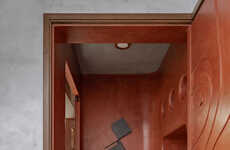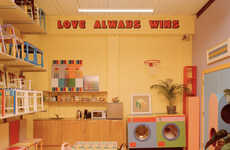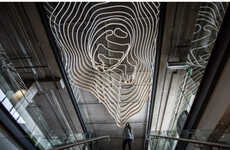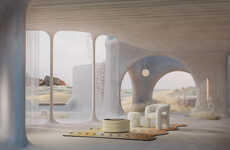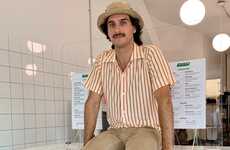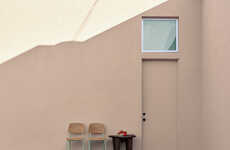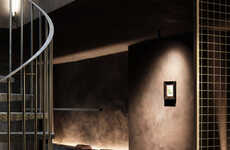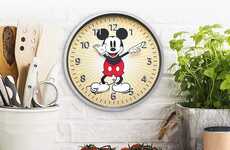
A Chat with Andrew Richmond, Visionary Behind model/ctzn
The visionary of Toronto-based design agency 'model/ctzn' is Andrew Richmond as he leads his team in constantly generating unique atmospheres, specifically in the restaurant industry. Much of his work pays attention to different senses in order to create an entirely enticing atmosphere, which is evidently showcased through mixing textures, color palettes, and prints. One of his most recent work is in Toronto's Yorkdale Mall -- the KITKAT Factory invites visitors to participate in their own chocolate bar creation. Other works by Richmond include Sweet Jesus, La Carnita, and Lapinou.
We got the chance to chat with Andrew about his 25 years in the industry, how he paved his career path, important factors of interior design, and his thoughts on the direction of the design industry as a whole.
Can you tell us a little bit about yourself and your career path?
My career path has crossed over into a few different business sectors, but the common thread throughout has always been putting my creativity forward to help build brands and spaces. I’ve worked in fashion, retail, food and beverage, and enterprise/agency at large corporate companies like Google and Cisco.
How do you go about creating a sensory-driven atmosphere?
I always start with the carnal level of the human senses, start at the baseline and work up. We start with how the space would interact with the guest’s sight, touch, smell, sound and so forth and move from there.
Can you tell us a little about the process of designing the KITKAT Factory? What were some important factors that were implemented?
The first step in designing the KITKAT Chocolatory was creating the brand territory/positioning in which we would work within. It informed all parts of the project moving forward. Once that was established, we moved onto the interior & graphic design elements as well as customer experience and operations. One of the most important factors of this project was to let the brand territory shine through in terms of design but also tying back to customer experience. After the overwhelming response, the KITKAT pop up received we knew we had to deliver a stand-up customer experience in the flagship store. Considering aspects like how employees and guests would deal with large line ups, chocolate tempering times, little details like that. On a project of this calibre we had to think not only about creating a beautiful space but a space that would logistically run seamlessly while giving guests a unique experience.
Are there certain rituals you practice to reset to be creative?
When I need a reset to get creative I travel. Going to other cities, experiencing other cultures, and soaking in things that I don’t experience on a regular basis gives me fresh perspective and inspiration.
What's next for model/ctzn? What direction do you think the design industry is headed in the next 5 years?
Were just going to keep doing what we do best—create great interiors, enticing customer experiences, and next-level design. I think we’re going to see the boundaries of design executions blur a little bit. Interior design, fashion design, graphic design. I don’t think those lines will be as finite as they are now. Collaborative working is the way forward and it is how we want to position model/ctzn.
We got the chance to chat with Andrew about his 25 years in the industry, how he paved his career path, important factors of interior design, and his thoughts on the direction of the design industry as a whole.
Can you tell us a little bit about yourself and your career path?
My career path has crossed over into a few different business sectors, but the common thread throughout has always been putting my creativity forward to help build brands and spaces. I’ve worked in fashion, retail, food and beverage, and enterprise/agency at large corporate companies like Google and Cisco.
How do you go about creating a sensory-driven atmosphere?
I always start with the carnal level of the human senses, start at the baseline and work up. We start with how the space would interact with the guest’s sight, touch, smell, sound and so forth and move from there.
Can you tell us a little about the process of designing the KITKAT Factory? What were some important factors that were implemented?
The first step in designing the KITKAT Chocolatory was creating the brand territory/positioning in which we would work within. It informed all parts of the project moving forward. Once that was established, we moved onto the interior & graphic design elements as well as customer experience and operations. One of the most important factors of this project was to let the brand territory shine through in terms of design but also tying back to customer experience. After the overwhelming response, the KITKAT pop up received we knew we had to deliver a stand-up customer experience in the flagship store. Considering aspects like how employees and guests would deal with large line ups, chocolate tempering times, little details like that. On a project of this calibre we had to think not only about creating a beautiful space but a space that would logistically run seamlessly while giving guests a unique experience.
Are there certain rituals you practice to reset to be creative?
When I need a reset to get creative I travel. Going to other cities, experiencing other cultures, and soaking in things that I don’t experience on a regular basis gives me fresh perspective and inspiration.
What's next for model/ctzn? What direction do you think the design industry is headed in the next 5 years?
Were just going to keep doing what we do best—create great interiors, enticing customer experiences, and next-level design. I think we’re going to see the boundaries of design executions blur a little bit. Interior design, fashion design, graphic design. I don’t think those lines will be as finite as they are now. Collaborative working is the way forward and it is how we want to position model/ctzn.
Trend Themes
1. Sensory-driven Atmospheres - The trend of designing spaces that engage human senses creates opportunities to apply the knowledge of neuroscience and human psychology to the aesthetical and experiential aspects of the design process.
2. Customer Experience Design - This trend presents an opportunity to leverage technology and data to craft bespoke and personalized experiences for customers based on their interests, tastes, habits, and feedback.
3. Convergent Design Disciplines - The trend of integrating different design disciplines such as interior, fashion, and graphic design into a cohesive and seamless experience offers opportunities to create synergies and break down silos in the creative process.
Industry Implications
1. Hospitality - The hospitality industry can leverage sensory-driven atmospheres and customer experience design to create memorable and immersive experiences that differentiate their brand in a crowded market.
2. Retail - The retail industry can borrow some of the design principles of hospitality and apply them to their stores, creating sensory-rich and engaging spaces that attract and retain customers, and foster loyalty and advocacy.
3. Advertising - The advertising industry can partner with design agencies to create immersive and experiential campaigns that leverage sensory stimulation and interactive technologies to engage and delight audiences, and deliver brand messages in a more impactful and memorable way.
4.4
Score
Popularity
Activity
Freshness

